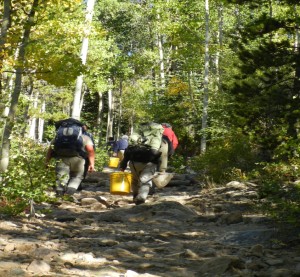This is not a dispassionate report.
The threat of losing our public lands looms large. That threat grows, passing like wildfire through halls of Congress and state capitols, spreading its invasive rhetoric in our communities. People with soft hands and expensive suits tell us
 “It’s just transfer. It’s not like we’re selling them.”
“It’s just transfer. It’s not like we’re selling them.”
It’s not just transfer. And it is a big deal.
The truth is that the distance between the effort to “transfer” public lands and to sell them is very short. Many of the states that would manage these lands have already sold significant portions of their formerly public state land to the highest seller. And we, as a country, have nothing to gain by such actions.
We have nothing to gain. And everything to lose.
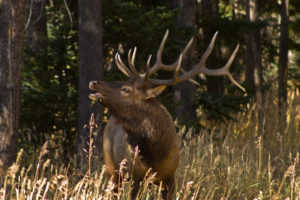 Public lands are for anglers, hunters, hikers, campers, backpackers, energy producers, mountain climbers, berry pickers, ranchers, horse packers, birders, timber operators, miners, snowmobilers, ATVer’s, mountain bikers.
Public lands are for anglers, hunters, hikers, campers, backpackers, energy producers, mountain climbers, berry pickers, ranchers, horse packers, birders, timber operators, miners, snowmobilers, ATVer’s, mountain bikers.
Nature’s enthusiasts. Advocates of open space and the guardians of our right to use it.
We are public lands. Public lands are our birthright as American citizens. And we will not give them up.
Statistics make the point. More than 70 percent of hunters use public lands in the West. Nearly 70 percent of native trout strongholds are on public lands. A growing majority of hunters and anglers oppose the sale of public lands.
Public lands create strongholds of important fish and wildlife habitat. Public lands provide important sources of clean water for tens of millions of people. Public lands are some of the last pristine places in the country.
Sure, these things are important.
But the bottom line is these are our lands. Yours. Mine. Ours. And a greedy few are trying to steal them from us.
 Public lands are part of what define us as Americans. They are what remain of the great westward migration of the nation. They are the crucible upon which the character of the nation was formed. Our forebears left these lands to us, not so we could sell them to the highest bidder. They left them to us as an heirloom to pass on intact to the next generation. These lands are our birthright. They are a beacon of blinding and unwavering light on what it means to be free.
Public lands are part of what define us as Americans. They are what remain of the great westward migration of the nation. They are the crucible upon which the character of the nation was formed. Our forebears left these lands to us, not so we could sell them to the highest bidder. They left them to us as an heirloom to pass on intact to the next generation. These lands are our birthright. They are a beacon of blinding and unwavering light on what it means to be free.
Whether you call it sale, transfer, or divestiture, allowing public lands to fall from public ownership would represent the triumph of cynicism over democracy. We — you and me, all of us who own these lands by virtue of our citizenship — can make sure that never happens.
We are public lands. And we will not step aside.






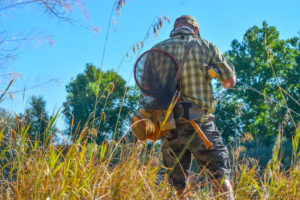 For the last 10 years, Denver Trout Unlimited has hosted the
For the last 10 years, Denver Trout Unlimited has hosted the  Chris Galvin, defending champion, hooked into one of the Mile High Stadium carp under the I-25 bridge and carefully moved it downstream in order not to disturb the pod. Ten minutes later, he tricked another for a masterful 2 fish within a few minutes. He added another only ten minutes before the morning session ended to take the lead going into the lunch break at Black-Black Cafe.
Chris Galvin, defending champion, hooked into one of the Mile High Stadium carp under the I-25 bridge and carefully moved it downstream in order not to disturb the pod. Ten minutes later, he tricked another for a masterful 2 fish within a few minutes. He added another only ten minutes before the morning session ended to take the lead going into the lunch break at Black-Black Cafe. Second place was snatched by Trevor Tanner and Kyle Richards. Third place went to the team of Frank Smethurst and rookie Vernon Naake with 3 fish for 70.38 inches.
Second place was snatched by Trevor Tanner and Kyle Richards. Third place went to the team of Frank Smethurst and rookie Vernon Naake with 3 fish for 70.38 inches.

 opposed to the Superfund program, now supports the listing along with local communities and law makers. “I’m hopeful that with this designation the EPA will continue to collaborate with local, tribal and state officials and work to protect the local economy, maximizing local employment opportunities where possible, and providing adequate funding to ensure the cleanup begins as quickly as possible,” said US Rep. Scott Tipton.
opposed to the Superfund program, now supports the listing along with local communities and law makers. “I’m hopeful that with this designation the EPA will continue to collaborate with local, tribal and state officials and work to protect the local economy, maximizing local employment opportunities where possible, and providing adequate funding to ensure the cleanup begins as quickly as possible,” said US Rep. Scott Tipton.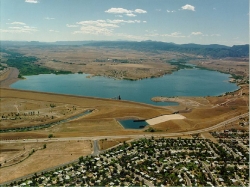 It was
It was 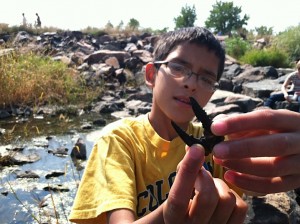 Projects like Stream Explorers have also helped the South Platte by teaching students about the river and how it is used for both human and aquatic needs. Learning how a city can impact the health of a river and how the river plays such a vital role to our way of life is important to teach to the next generation of river stewards.
Projects like Stream Explorers have also helped the South Platte by teaching students about the river and how it is used for both human and aquatic needs. Learning how a city can impact the health of a river and how the river plays such a vital role to our way of life is important to teach to the next generation of river stewards. Colorado Trout Unlimited, it's chapters, and volunteers helped Colorado Parks and Wildlife clip fins of Cutbow Trout as part of CPW's ongoing study of diploid vs triploid trout in Eleven Mile Reservoir.
Volunteers, along with staff from CPW helped clip over 26,000 fish in just the first day at the Mt. Shavano Fish Hatchery in Salida. Over the last two years, 97 volunteers helped clip over 148,00 fish in a six day period.
Colorado Trout Unlimited, it's chapters, and volunteers helped Colorado Parks and Wildlife clip fins of Cutbow Trout as part of CPW's ongoing study of diploid vs triploid trout in Eleven Mile Reservoir.
Volunteers, along with staff from CPW helped clip over 26,000 fish in just the first day at the Mt. Shavano Fish Hatchery in Salida. Over the last two years, 97 volunteers helped clip over 148,00 fish in a six day period. The fish used in this study are Rainbow X Cutthroat hybrid trout. Or commonly known as Cutbow trout.
The fish used in this study are Rainbow X Cutthroat hybrid trout. Or commonly known as Cutbow trout. The Western Native Trout Initiative (WNTI) has granted Colorado Trout Unlimited and the Cheyanne Mountain Chapter of Trout Unlimited $6000. Two $3,000 grants will be used to help bring public awareness to native trout and help further greenback genetic studies at Mt. Shavano Fish Hatchery. Western Native Trout Initiative is an organization dedicated to protecting native trout. They offer many different grant opportunities that provide conservation organizations with a means to realize their native trout projects.
The Western Native Trout Initiative (WNTI) has granted Colorado Trout Unlimited and the Cheyanne Mountain Chapter of Trout Unlimited $6000. Two $3,000 grants will be used to help bring public awareness to native trout and help further greenback genetic studies at Mt. Shavano Fish Hatchery. Western Native Trout Initiative is an organization dedicated to protecting native trout. They offer many different grant opportunities that provide conservation organizations with a means to realize their native trout projects.